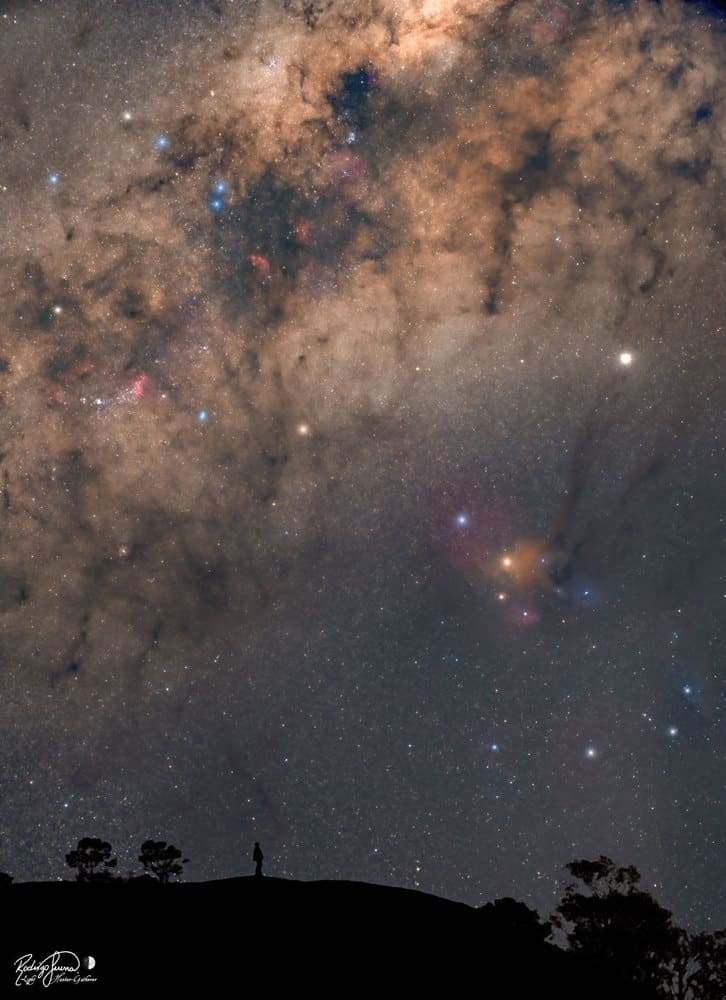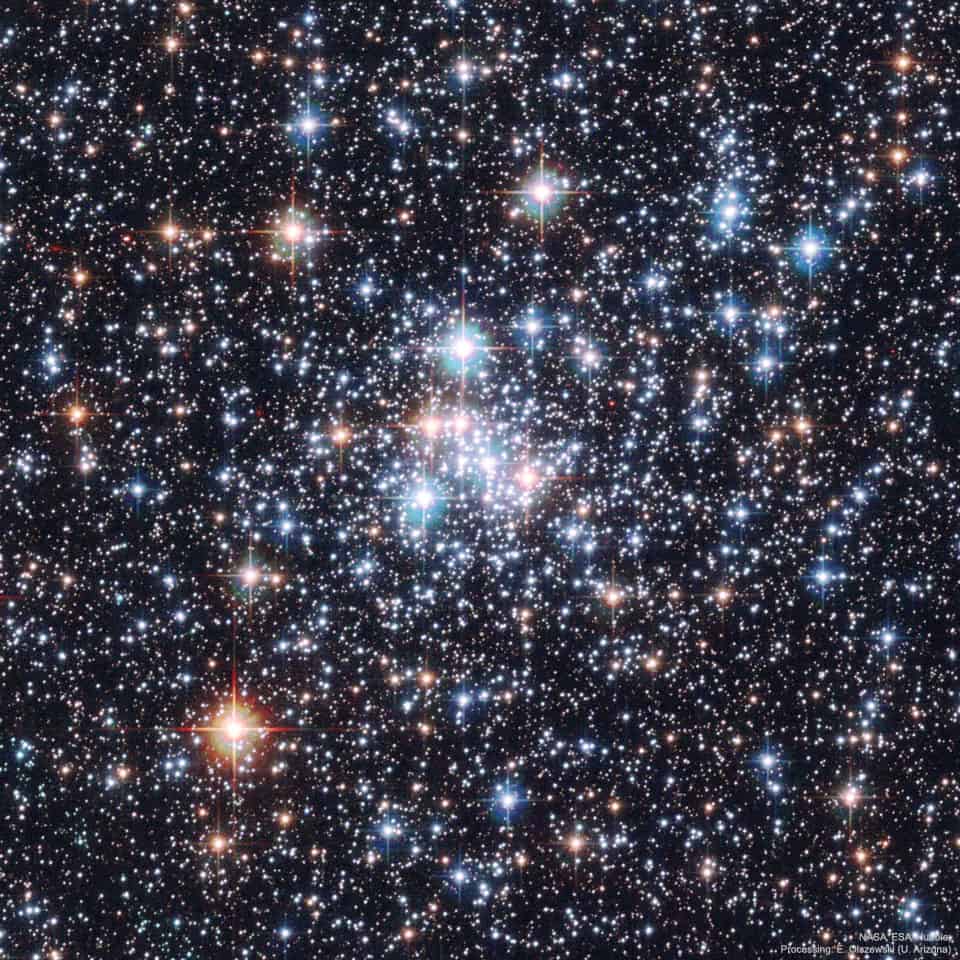Blog
María del Carmen García Galisteo MML (born 16 October 1930) known professionally as Carmen Sevilla is a Spanish actress, singer and television presenter. Her film roles include Academy Award nominee Vengeance, Searching for Monica (1962) and the 1956 French film Don Juan. Carmen Sevilla was born in Seville. Sevilla made her film début in 1948 in Jalisco Sings in Seville, She joy great famous in the make The Troublemaker with Tony Leblanc. She played Mary Magdalene in Nicholas Ray‘s King of Kings.
In 1972, she played Octavia in the English-language film Antony and Cleopatra, She also appeared in La Cera Virgen (1972), Nadie oyó gritar (1973), and Beatriz (1976). She received a Círculo de Escritores Cinematográficos (Cinema Writers Circle) lifetime award in 2004.
https://www.youtube.com/watch?v=R13nv0c5q3w
more...Joseph Lee “Big Joe” Williams (October 16, 1903 – December 17, 1982) was an American Delta blues guitarist, singer and songwriter, notable for the distinctive sound of his nine-string guitar. Performing over four decades, he recorded the songs “Baby Please Don’t Go”, “Crawlin’ King Snake” and “Peach Orchard Mama”, among many others, for various record labels, including Bluebird, Delmark, Okeh, Prestige and Vocalion. He was inducted into the Blues Hall of Fame on October 4, 1992.
The blues historian Barry Lee Pearson (Sounds Good to Me: The Bluesman’s Story, Virginia Piedmont Blues) described Williams’s performance:
- When I saw him playing at Mike Bloomfield’s “blues night” at the Fickle Pickle, Williams was playing an electric nine-string guitar through a small ramshackle amp with a pie plate nailed to it and a beer can dangling against that. When he played, everything rattled but Big Joe himself. The total effect of this incredible apparatus produced the most buzzing, sizzling, African-sounding music I have ever heard.
- Born in Oktibbeha County, a few miles west of Crawford, Mississippi, Williams as a youth began wandering across the United States busking and playing in stores, bars, alleys and work camps. In the early 1920s he worked in the Rabbit Foot Minstrels revue. He recorded with the Birmingham Jug Band in 1930 for Okeh Records.
The featured picture is actually a composite of two images taken last month from the same location in south Brazil and with the same camera — but a few hours apart. The person in the image — also the astrophotographer — has much to see in the Milky Way Galaxy above. The central band of our home Galaxy stretches diagonally up from the lower left. This band is dotted with spectacular sights including dark nebular filaments, bright blue stars, and red nebulas. Millions of fainter and redder stars fill in the deep Galactic background. To the lower right of the Milky Way are the colorful gas and dust clouds of Rho Ophiuchi, featuring the bright orange star Antares. On this night, just above and to the right of Antares was the bright planetJupiter. The sky is so old and so familiar that humanity has formulated many stories about it, some of which inspired this very picture.

Fela Anikulapo Kuti (15 October 1938 – 2 August 1997), also professionally known as Fela Kuti, or simply Fela, was a Nigerian multi-instrumentalist, musician, composer, pioneer of the Afrobeat music genre and human rights activist. At the height of his popularity, he was referred to as one of Africa’s most “challenging and charismatic music performers”. Fela was born Olufela Olusegun Oludotun Ransome-Kuti on 15 October 1938 in Abeokuta, the modern-day capital of Ogun State in the Federal Republic of Nigeria, then a city in the British Colony of Nigeria,into an upper-middle-class family. His mother, Chief Funmilayo Ransome-Kuti, was a feminist activist in the anti-colonial movement; his father, Reverend Israel Oludotun Ransome-Kuti, an Anglican minister and school principal, was the first president of the Nigeria Union of Teachers. His brothers Beko Ransome-Kuti and Olikoye Ransome-Kuti, both medical doctors, are well-known in Nigeria. Fela is a first cousin to the Nigerian writer and Nobel laureate Wole Soyinka, the first African to win the Nobel Prize for Literature.
Fela attended Abeokuta Grammar School. Later he was sent to London in 1958 to study medicine, but decided to study music instead at the Trinity College of Music, the trumpet being his preferred instrument.While there, he formed the band Koola Lobitos, playing a fusion of jazz and highlife. In 1960, Fela married his first wife, Remilekun (Remi) Taylor, with whom he would have three children (Femi, Yeni, and Sola). In 1963, Fela moved back to the newly independent Federation of Nigeria, re-formed Koola Lobitos and trained as a radio producer for the Nigerian Broadcasting Corporation. He played for some time with Victor Olaiya and his All Stars.
In 1967, Fela went to Ghana to think up a new musical direction. That was when Kuti first called his music Afrobeat a combination of funk, jazz, salsa, Calypso and traditional Nigerian Yoruba music. In 1969, Fela took the band to the United States where they spent 10 months in Los Angeles. While there, Fela discovered the Black Power movement through Sandra Smith (now Sandra Izsadore), a partisan of the Black Panther Party. The experience would heavily influence his music and political views. He renamed the band Nigeria ’70. Soon afterwards, the Immigration and Naturalization Service was tipped off by a promoter that Fela and his band were in the US without work permits. The band performed a quick recording session in Los Angeles that would later be released as The ’69 Los Angeles Sessions. After Fela and his band returned to Nigeria, the group was renamed The Afrika ’70, as lyrical themes changed from love to social issues. He formed the Kalakuta Republic, a commune, a recording studio, and a home for the many people connected to the band that he later declared independent from the Nigerian state. According to Lindsay Barrett, the name “Kalakuta” derived from the infamous Black Hole of Calcutta dungeon in India. Fela set up a nightclub in the Empire Hotel, first named the Afro-Spot and later the Afrika Shrine, where he both performed regularly and officiated at personalized Yoruba traditional ceremonies in honour of his nation’s ancestral faith. He also changed his name to Anikulapo (meaning “He who carries death in his pouch”, with the interpretation: “I will be the master of my own destiny and will decide when it is time for death to take me”). He stopped using the hyphenated surname “Ransome” because it was a slave name.
more...Nellie Rose Lutcher (October 15, 1912 – June 8, 2007) was an African-American R&B and jazz singer and pianist, who gained prominence in the late 1940s and early 1950s. Lutcher was most recognizable for her diction and exaggerated pronunciation and was credited as an influence by Nina Simone among others. Lutcher was born in Lake Charles, Louisiana, the eldest daughter of the 15 children of Isaac and Suzie Lutcher. She was the sister of saxophonistJoe Lutcher. Her father was a bass player and her mother a church organist. She received piano lessons, and her father formed a family band with her playing piano. At age 12, she played with Ma Rainey, when Rainey’s regular pianist fell ill and had to be left behind in the previous town. Searching for a temporary replacement in Lake Charles, one of the neighbors told Rainey that there was a little girl who played in church who might be able to do it. Aged 15, Lutcher joined her father in Clarence Hart‘s Imperial Jazz Band, and in her mid-teens also briefly married the band’s trumpet player. In 1933, she joined the Southern Rhythm Boys, writing their arrangements and touring widely. In 1935, she moved to Los Angeles, where she married Leonel Lewis and had a son. She began to play swing piano, and also to sing, in small combos throughout the area, and began developing her own style, influenced by Earl Hines, Duke Ellington and her friend Nat “King” Cole.
She was not widely known until 1947 when she learned of the March of Dimes talent show at Hollywood High School, and performed. The show was broadcast on the radio and her performance caught the ear of Dave Dexter, a scout for Capitol Records. She was signed by Capitol and made several records, including “The One I Love (Belongs to Somebody Else)” and her first hit single, the risqué “Hurry On Down”, which went to # 2 on the rhythm and blues chart. This was followed by her equally successful composition “He’s A Real Gone Guy”, which also made # 2 on the R&B chart and crossed over to the pop charts where it reached # 15.
more...MacHouston Baker (October 15, 1925 – November 27, 2012), known professionally as Mickey Baker and Mickey “Guitar” Baker, was an American guitarist. Baker was born in Louisville, Kentucky. His mother was black, and his father, whom he never met, was believed to be white.
In 1936, at the age of 11, Baker was put into an orphanage. He ran away frequently, and had to be retrieved by the staff from St. Louis, New York City, Chicago, and Pittsburgh. Eventually the orphanage quit looking for him, and at the age of 16 he stayed in New York City. He found work as a laborer and then a dishwasher. But after hanging out in the pool halls of 26th Street, he gave up work to become a full-time pool shark.
By 1949, Baker had his own combo, and a few paying jobs. He decided to move west, but found that audiences there were not receptive to progressive jazz music. Baker was stranded without work in California when he saw a show by blues guitarist Pee Wee Crayton.[5] Baker said of the encounter:
“I asked Pee Wee, ‘You mean you can make money playing that stuff on guitar?’ Here he was driving a big white Eldorado and had a huge bus for his band. So I started bending strings. I was starving to death, and the blues was just a financial thing for me then.”
He found a few jobs in Richmond, California, and made enough money to return to New York.
After returning east, Baker began recording for Savoy, King and Atlantic Records. He did sessions with Doc Pomus, The Drifters, Ray Charles, Ivory Joe Hunter, Ruth Brown, Big Joe Turner, Louis Jordan, Coleman Hawkins, and numerous other artists.[6]
Inspired by the success of Les Paul & Mary Ford, he formed the pop duo Mickey & Sylvia (with Sylvia Robinson, one of his guitar students) in the mid-1950s. Together, they had a hit single with “Love Is Strange” in 1956. The duo split up in the late 1950s, but sporadically worked together on additional tracks until the mid-1960s. It was around this time that he moved to France, where he worked with Ronnie Bird and Chantal Goya and made a few solo records. He would remain in France for the rest of his life. Up until the end of his life, Baker was rarely without work.
more...Meet & Greet session at Wilder 1230-130 Great Rm & 130-230 Day Rm. Three Compas artists Nirmala Rajasekar, Benjamin the Mime and mick laBriola presenting a sketch of upcoming Residencies. Rhythm Roots Workshop Residency will run November 4-6-11-13th.

The NGC 5679 group, also known as Arp 274, is a triplet of galaxies, MCG+1-37-36, MCG+1-37-35 and MCG+1-37-34, spanning about 200000 light-years and at some 400 million light-years from Earth in the constellation Virgo. Arp 247 refers to the Atlas of Peculiar Galaxies, compiled by Halton Arp in 1966. Galaxies 269 through 274 in his catalogue are galaxies that appear to have connected arms.
NGC 5679 was imaged by Hubble in 2009, in a combination of blue, visible, infrared and Hα filters. The photograph shows that all three galaxies, especially the galaxies on the left and right, are starburst galaxies, meaning that there is currently a large amount of star formation in the galaxies. Interstellar dust can be seen between the areas of star formation. Two bright stars can be seen just above the galaxy on the right side; these are foreground stars that are actually part of our own galaxy.
Redshift measurements of the three galaxies give these radial velocity values, from left to right: 7483, 8654, and 7618 km/s.The relatively high redshift for the center galaxy means that it is much farther away – about 65 million light years (20 megaparsecs) behind the other two galaxies. Thus, the center galaxy is likely a background object. The NGC 5679 group was previously thought to be interacting gravitationally, however the newer Hubble image seems to confirm suspicions that the center galaxy is not interacting, as the galaxy arms are not distorted like typical interacting galaxies.

Duško Gojković (Serbian Cyrillic: Душко Гојковић; born 14 October 1931) is a Serbian jazz trumpeter, composer, and arranger.
Gojković was born in Jajce (ex-Yugoslavia, now in Bosnia-Herzegovina). He studied at the Belgrade Music Academy from 1948 to 1953. He played trumpet in dixieland bands and joined the big band of Radio Belgrade when he was eighteen. He moved to West Germany and recorded his first album as a member of the Frankfurt All Stars. He spent the next four years as a member of Kurt Edelhagen‘s orchestra.
In these years he played with Chet Baker, Stan Getz, and Oscar Pettiford. In 1958 he performed at Newport Jazz Festival and drew much attention on both sides of the Atlantic Ocean.
In 1966 he recorded his album Swinging Macedonia, produced by Eckart Rahn. The album contained original compositions inspired by the music of Balkans. In the years to follow he played with Miles Davis, Dizzy Gillespie, Gerry Mulligan, Sonny Rollins, Duke Jordan, and Slide Hampton.
He worked with the Kenny Clarke/Francy Boland Big Band from 1968–1973.
more...Pandit Nikhil Ranjan Banerjee (14 October 1931 – 27 January 1986) was an Indian classical sitarist of the Maihar Gharana. A student of the legendary Baba Allauddin Khan, Pandit Nikhil Banerjee was known for his technical virtuosity and clinical execution. Along with Pandit Ravi Shankarand Ustad Vilayat Khan, he emerged as one of the leading exponents of the sitar. He was a recipient of the Indian civilian honour of the Padma Bhushan.
Nikhil Banerjee was born on 14 October 1931 in Calcutta. His father, Jitendranath Banerjee, was an amateur sitarist and Banerjee was fascinated by his father’s playing. Although he wanted to try his hand at an instrument as early as the age of four, he was discouraged by his father and grandfather. At the age of five, however, they relented and he acquired a small sitar, initially learning under his father. Banerjee grew into a child prodigy.[citation needed] He won an all-India sitar competition and became the youngest musician employed by All India Radio at the age of nine. Jitendranath approached Mushtaq Ali Khan to take Nikhil as a disciple, but only learned from this master for a few short weeks. Instead Birendra Kishore Roy Chowdhury, the zamindar of Gouripur in present-day Bangladesh, became responsible for much of his early training. He also had considerable training under Pt. Radhika Mohan Maitra, before he went under the discipleship of Ustd. Allauddin Khan.
more...Robert Parker (born October 14, 1932) is an American R&B singer and musician, best known for his 1966 hit, “Barefootin’“.
Parker was born in New Orleans, Louisiana, United States, and started his career as a saxophonist, playing with Professor Longhair on his hit “Mardi Gras In New Orleans” in 1949. Over the next decade, he played with most of New Orleans’ musicians, including Fats Domino, Irma Thomas, and Huey “Piano” Smith. By 1958, he had started recording solo, having a local hit with the instrumental “All Night Long”. In 1965 he signed for Nola Records, and had his biggest hit with “Barefootin’”. It sold over one million copies, and was awarded a gold disc by the RIAA. Although he continued to record, he failed to repeat his success in terms of sales, and his recording career effectively ended in the 1970s. However, he continued to perform and tour for many more years, remaining especially popular in the UK.
https://www.youtube.com/watch?v=orjfH4bbTZ4
more...James “Son” Thomas (October 14, 1926 – June 26, 1993) was an American Delta blues musician, gravedigger and sculptor from Leland, Mississippi.
Born in Eden, Mississippi, Thomas was known as a folk artist for his sculptures made from unfired clay, which he dug out of the banks of the Yazoo River. His most famous sculpted images were skulls (often featuring actual human teeth), which mirrored his job as a gravedigger and his often stated philosophy that “we all end up in the clay”. In 1985, his work was featured in the prestigious Corcoran Gallery in Washington, D.C., where he was introduced to Nancy Reagan, then the First Lady. Thomas’s skulls are on display in the Delta Blues Museum, in Clarksdale, Mississippi, and the Highway 61 Blues Museum, in Leland, Mississippi. Thomas played at numerous blues festivals and private parties throughout the area, including the Mississippi Delta Blues and Heritage Festival in Greenville. In the 1970s, Eddie Cusic performed with Thomas at regular engagements. Together they recorded “Once I Had a Car”, which is included on the compilation album Mississippi Delta & South Tennessee Blues (1977).
In later performances he was accompanied by the Swiss harmonica player Walter Liniger. Thomas was recorded by several small record labels and is probably best known for his album Gateway to the Delta, recorded by Rust College in Holly Springs, Mississippi, but he remains an obscure figure outside of dedicated blues communities.[citation needed]
In the 1970s, he appeared in the films Delta Blues Singer: James “Sonny Ford” Thomas, Give My Poor Heart Ease: Mississippi Delta Bluesmen, and Mississippi Delta Blues.
Thomas died in 1993 in Greenville, Mississippi, from emphysema and a stroke.[2] He is buried in Leland and memorialized by a headstone placed in 1996 by the Mt. Zion Memorial Fund and paid for by John Fogerty. His epitaph consists of lyrics from one of his songs. His son, Pat Thomas, continues to play and perform his father’s songs.
https://www.youtube.com/watch?v=aaZ1G-NZHC4
more...https://www.youtube.com/watch?v=e_-Ek9bpTyI
more...The stars of open cluster NGC 290 glitter in a beautiful display of brightness and color. The photogenic cluster, pictured here, was captured in 2006 by the orbiting Hubble Space Telescope. Open clusters of stars are younger, contain few stars, and contain a much higher fraction of blue stars than do globular clusters of stars. NGC 290 lies about 200,000 light-years distant in a neighboring galaxy called the Small Cloud of Magellan (SMC). The open cluster contains hundreds of stars and spans about 65 light years across. NGC 290 and other open clusters are good laboratories for studying how stars of different masses evolve, since all the open cluster’s stars were born at about the same time.

more...
More Posts
- Milo Fine: Composing in Real Time
- Homewood Studios: You Do Not Have to Leave the Community to Find Great Art
- David Harris: Music Builds Community
- Jamie Carter: Music is a Reflection of Life
- Merlin Brunkow-Bronco Keeps on Playing
- Scott Nieman-Music Brings People Together Locally and Globally
- KARIBUNI
- Maqam
- Ancestor Energy
- Maroons
- Mojo Roots
- Voices of Sepharad
- Beau Koo Jacks
- World Cafe International
- Mojo Roots: Prakriti’s Kiss
- Ancestor Energy: Allwhere
- Songs for Diego: I’m Missing You
